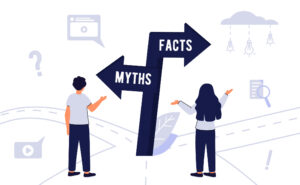
Mold is a common household issue that can cause significant health problems if not addressed properly. However, there are many misconceptions about mold that can lead to improper handling or unnecessary panic. Let’s debunk some of the most common mold myths and set the record straight.
1. Myth: Bleach Kills Mold
Fact: While bleach might remove surface mold, it doesn’t penetrate porous materials where mold often hides. This means the mold can continue to grow beneath the surface, leading to recurring issues. Professional mold remediation services use specialized techniques and products to eliminate mold at its root.
2. Myth: Small Amounts of Mold Are Harmless
Fact: Even small amounts of mold can pose serious health risks, especially for those with allergies, asthma, or weakened immune systems. Mold spores can spread throughout your home, affecting air quality and causing respiratory issues. Any visible mold should be addressed promptly to prevent further spread.
3. Myth: You Can Always See or Smell Mold
Fact: Mold isn’t always visible or detectable by smell. It can grow behind walls, under floors, or in other hidden areas, often following a leak or high humidity. Regular inspections, especially in moisture-prone areas, are crucial for detecting hidden mold problems.
4. Myth: Mold Only Grows in Wet Climates
Fact: While mold thrives in damp environments, it can grow in any climate if there is sufficient moisture. Leaks, condensation, and poor ventilation can all create conditions conducive to mold growth, even in otherwise dry areas.
5. Myth: Mold is Only Dangerous to People with Allergies
Fact: Mold can be harmful to everyone, not just those with allergies. Prolonged exposure to mold can cause respiratory issues, skin irritation, and other health problems in people of all ages and health conditions. It’s essential to address mold issues to protect the health of everyone in the household.
Understanding the truth about mold is the first step in effectively managing it. Don’t let these myths lead you to underestimate the potential dangers of mold in your home.
For more information on mold and how to address it, you can visit the Environmental Protection Agency’s (EPA) Mold Guide.
